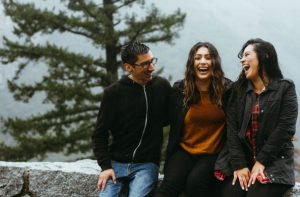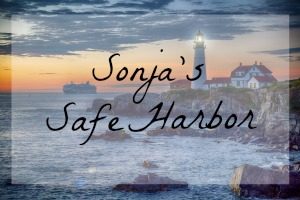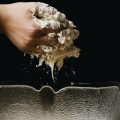Everyone’s brains are unique and the gifts and talents with which we are blessed vary widely. I am blessed to be able to facilitate a twice-monthly class in our stake on “life skills for emotional health.” We focus on various topics and may spend several classes learning about principles that help us build emotional resilience.
One topic we are just beginning this month is based on principles for communicating effectively when there are strong emotions, opinions differ, and relationships are at risk as a result of lack of skill. One of my favorite topics is about self-awareness. Other-awareness actually begins with an understanding of how we show up for other people. Most people have no idea how others see them and they often are trapped inside their over-amplification of their own failures, getting down on themselves because that’s what they focus on. We are often our own harshest critics.
 I love to ask people to make a list of their gifts and talents. Typically, I get a blank stare. Many assume that if you aren’t accomplished in the arts (music, painting, writing, sewing, quilting, canning, etc.), you don’t have any gifts or talents. The next thing I suggest is that we begin with one person being in the “spotlight” and then we go around the circle and each person shares their view of what the spotlighted person’s gifts and talents are. I appoint a scribe from the group to record the resulting comments. When everyone in the circle is complete, the scribe hands the list to the spotlighted person. Then we continue around the circle as we spotlight and record the comments for each person in the class. This is one of the most uplifting and insightful gifts for each attendant. I encourage them to post the list in a place at home where they can be reminded of all the wonderful qualities that they may have been unaware they possessed. I remind them of something I remember Elder Bednar saying about one of the gifts he notices in his wife: “She is quick to observe.” For years he has watched her at church, at home, and in the community go up to someone that is in need of a kind word, a hug, or a listening ear. She just notices without being told what is needed.
I love to ask people to make a list of their gifts and talents. Typically, I get a blank stare. Many assume that if you aren’t accomplished in the arts (music, painting, writing, sewing, quilting, canning, etc.), you don’t have any gifts or talents. The next thing I suggest is that we begin with one person being in the “spotlight” and then we go around the circle and each person shares their view of what the spotlighted person’s gifts and talents are. I appoint a scribe from the group to record the resulting comments. When everyone in the circle is complete, the scribe hands the list to the spotlighted person. Then we continue around the circle as we spotlight and record the comments for each person in the class. This is one of the most uplifting and insightful gifts for each attendant. I encourage them to post the list in a place at home where they can be reminded of all the wonderful qualities that they may have been unaware they possessed. I remind them of something I remember Elder Bednar saying about one of the gifts he notices in his wife: “She is quick to observe.” For years he has watched her at church, at home, and in the community go up to someone that is in need of a kind word, a hug, or a listening ear. She just notices without being told what is needed.
Let me share an experience I had in discovering my gifts. It took me years to realize that one of my gifts is that I see life in metaphor. One of my friends used to call my insights “peach-ables” because they reminded her of the way Jesus taught in “pear-ables.” Because in my early developmental years I had little exposure to life skills, I was a very slow learner, especially in understanding the scriptures or any other complex subject. The way I compensated was to associate a complex learning experience with something simple that explained it in terms I could grasp. Once I learned it and translated it into simple terms, I would pass that learning experience along.
When my sons were in high school, I was a seminary teacher for about four years. The most memorable hands-on learning came from the lessons I’d learned about making homemade bread. Let me briefly explain a principle about making good homemade bread.
I remember watching my stepmother making bread so that I could learn the steps. The first thing, of course, was to wash my hands and make sure my fingernails were clean because after the ingredients were mixed together, we had to “knead” the bread. After dumping the bread dough onto the clean and floured countertop, we started folding it over onto itself and punching it with our hands. At first it was really sticky, so we’d add a few sprinkles of flour to mix into the bread dough until it got less sticky. Over and over: fold, punch, sprinkle; fold, punch, sprinkle; fold. If it didn’t get kneaded properly, the baked bread would turn out with air pockets and it was often hard to chew. There are lots of ways to make bread and lots of different qualities of bread. Making bread by hand was hard! I was kind of like the story of the little red hen… I wanted to eat the bread, but I didn’t want to help make it.
 When I was a mom, I got a huge, powerful mixer that was capable of doing all the hard work. That’s when I learned the purpose of smacking the bread dough around. It is the way to develop the bread dough so it would be smooth, elastic, and the amazing platform for melted butter and sweet jam… Without the hard work! So, what was happening to the bread dough as it was getting smacked around? Turns out, that is how you develop the important qualities of gluten.
When I was a mom, I got a huge, powerful mixer that was capable of doing all the hard work. That’s when I learned the purpose of smacking the bread dough around. It is the way to develop the bread dough so it would be smooth, elastic, and the amazing platform for melted butter and sweet jam… Without the hard work! So, what was happening to the bread dough as it was getting smacked around? Turns out, that is how you develop the important qualities of gluten.
Gluten is a protein found in wheat products (I know; today allergies to gluten are not uncommon). In breadmaking, it’s exceedingly important. Think of gluten as the miraculous net that holds bread together — it helps dough rise by trapping gas bubbles during fermentation and gives bread its unique texture. I remember when the bread dough would rest and rise, we would punch it down again. I recall doing this routine two or three times before it could go into the bread pan, rise, and get baked. (Mmmm, I can almost smell it!)
I spent some of my childhood in a foster home with people who didn’t eat meat. They would rinse out the bread dough until all the starch was removed from it and all that was left was the stretchy, elastic protein wad. Then we’d fry it like a hamburger patty, and that was our main source of protein.
It took me years to put together a “peachable” that I could help others have a hands-on experience that would help them understand a complex subject. In reality, the Spirit had patiently waited until I was able to develop this gift of learning, then teaching, in metaphor.
It was time for the seminary lesson. The night before, I had the thought of demonstrating to the students how to separate the gluten from the wheat flour. I put just flour and water together in the mixer (I don’t remember the ratio) and slowly mixed it together until all the flour was wet. Then I turned the mixer up on high and watched as the goo of wet flour turned into a stretchy blanket that was completely wrapped around the beater. When I held it up, it stretched all the way down to the counter. Proof positive that the gluten had been developed by the repeated pounding from the beater.
I made up enough of the dough to give each student a handful. The next morning, I invited the students into the kitchen at the church where there were several large sinks for them to work at with their dough. First, I demonstrated to them how to successfully rinse all the starch out of the dough and reveal the gluten. I turned on the faucet to give me just a small stream of water. Then, holding the ball of dough in my hand, with my fingers closed around it, I briefly let water run over my hand so the dough was wet. Then I gently squeezed the ball of dough and watched as milky water (starch) began to drip into the sink. When I couldn’t get any more drips, I’d quickly put my hand in the water stream to get the dough wet again. More squeezing, more water, more squeezing. Finally, no more milky water was coming out of my dough. I opened my hand and all that was left was a much smaller ball of stretchy, strong gluten. I cautioned them when they started with their ball of dough to be patient and only use a small amount of water or the dough would just fall apart and they wouldn’t get to the gluten. Once they got the gluten separated from the starch, then they could wash it under the water like a piece of cloth and it wouldn’t fall apart.

To read more of Sonja’s articles, click here.
Then I passed around the wad of gluten so each student could feel how stretchy it was. You could hardly pull it apart. Once they all understood what gluten felt like, it was time for them to practice what they saw me do.
What transpired from this class has been one of the highlights of my life. I don’t know if any of the students remembers that experiment. I will never forget it. I have no doubt in my mind that the prompting to make up the bread dough for that class allowed the Spirit to teach a powerful lesson. Let me tell you what happened. First, I observed the interaction and conversation of the students in their various attempts to develop the gluten. Then we had an “after action review” (which I will discuss in my next article) of what I learned from them as I observed, and what they learned as they did the experiment.
About Sonja Hopkins
Sonja lives with her husband, Dale, on Anderson Island, Washington. She and her husband are Church Service Missionaries serving in the Addiction Recovery Program, focusing on pornography and sex addiction. She is also a certified life coach and teaches "Life Skills for Emotional Self-Mastery" in her stake twice a month. She does not teach you only to process something traumatic done to you in the past; rather, she helps you learn to feel it, heal it, and LET GO of whatever you still do to yourself and to others in order to cope with what was done to you in the past.
Twitter •







I read it, I loved it and am interested to learn how your students preceived what the peacheable was and how it related to each one personally.